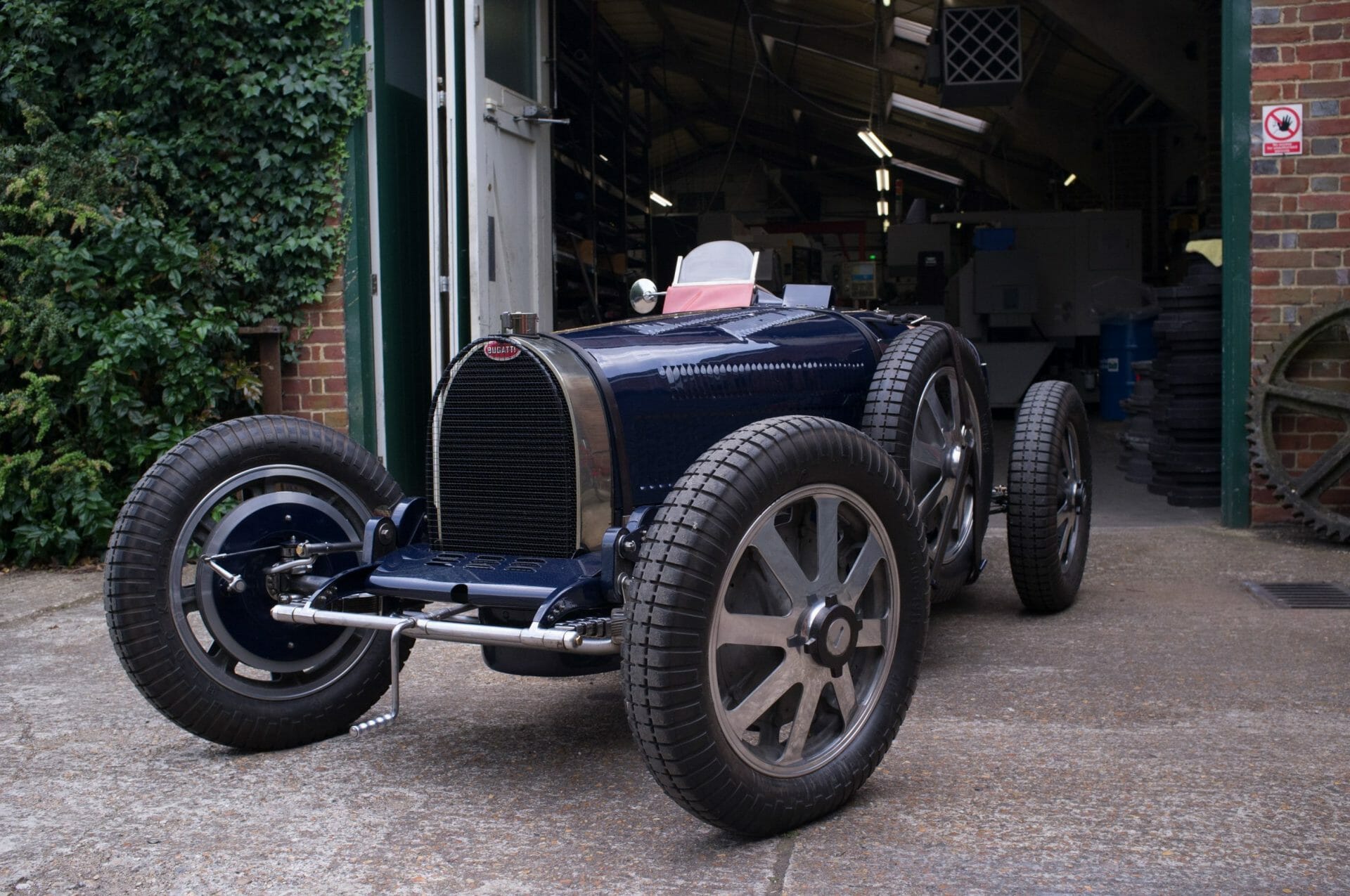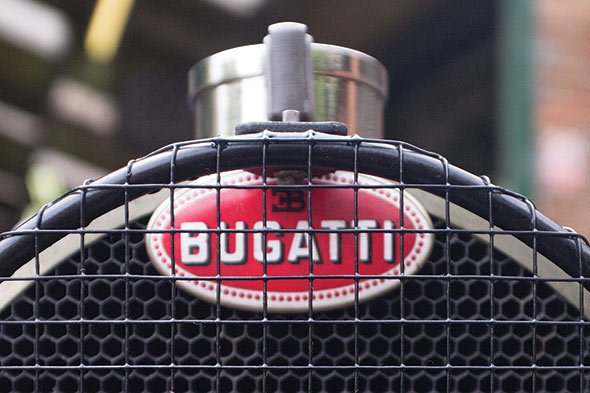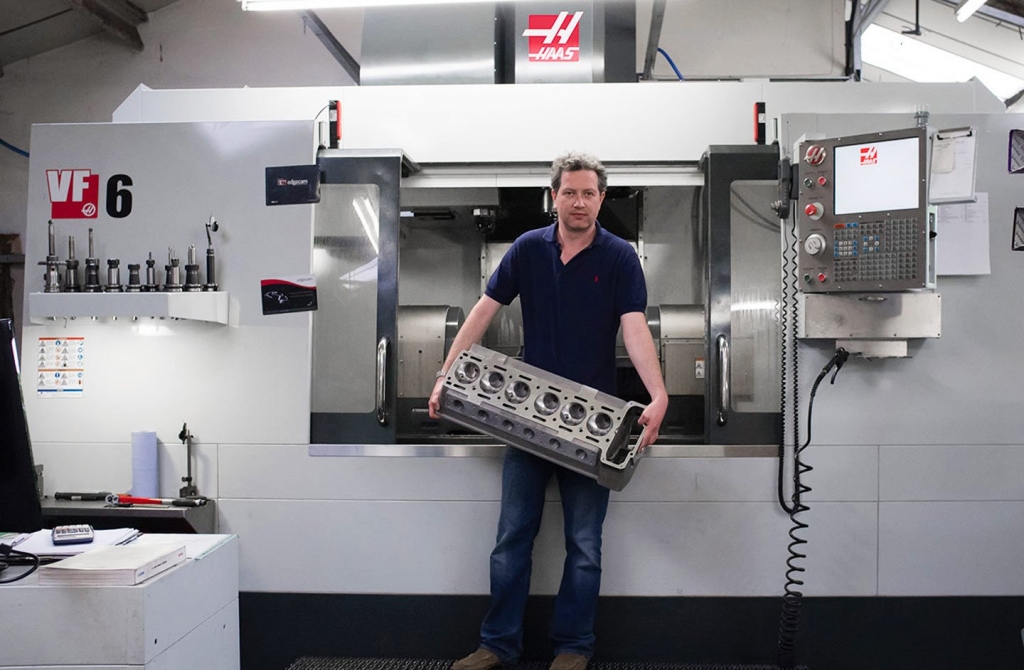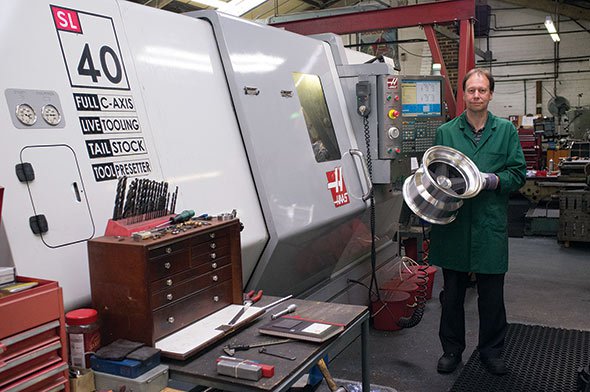Crosthwaite and Gardiner
Dick Crosthwaite began working on Bugattis in the late 1950s when parts were still available from the famous Molsheim factory. At the same time, John Gardiner was working as a toolmaker. Joining forces in the 1960s, Dick and John took on a garage in Lamberhurst, Kent. They’d actually just wanted to buy a batch of Bugatti magnetos being stored inside the negelected building, but ended up having to buy the entire garage just to get their hands on its contents. Crosland Engineering was formed and they worked as classic car restorers and a BMW garage.

Deciding that Lamberhurst wasn’t necessarily the most logical place for a BMW garage with 17 staff they soon looked for a new location.
After moving to the current idyllic premises at Buxted in 1969, Crosthwaite and Gardiner as we know it today, was formed. Their beginnings with Bugattis continue to this day as every type of Bugatti, bar the Royale, has been through their workshops.
Buying stock, original pattern equipment and drawings over the years and the need to manufacture parts for the cars that have been through the doors have resulted in Crosthwaite and Gardiner carrying the largest stock of Bugatti parts in the world.
Adding to the Bugatti work, Crosthwaite and Gardiner created a name for themselves by manufacturing new components for other famous racing marques. A series of projects to re-manufacture some of the most famous historic racing engines led to brand new Coventry Climax FPF, Maserati Birdcage, Jaguar LWE and D-type engines all of which still form the strongest product lines that the company offers.
Today, the company continues offering a wide range of components engineered and designed in-house to exacting specification and quality. The company is built on a wealth of knowledge and experience gained through over 45 years of producing parts for some of the most famous racing cars the world has ever seen.
The company produces thousands of individual stock lines. On top of manufacturing parts, they build brand new race engines and gearboxes, rebuild entire cars and engines and manufacture one-off projects. Working from original drawings and CAD design, they are able to create just about any part or component, often times better than original in terms of quality and reliability. However the passionate staff strives to preserve the all so important period correct outward appearance of the part or component.

Crosthwaite and Gardiner have always invested in the tooling and information to make the best parts possible. This continual investment has resulted in a drawing office full of over 12,000 original and CAD drawings, a pattern store with thousands of sandcasting wooden patterns and a machine shop equipped with some of the latest CNC equipment mixed with traditional fine engineering machines.
The business has invested in 4 Haas vertical machining centres and a Haas lathe. They recently invested in a VF-6 equipped with a TR-310 5-axis trunnion. Managing director Ollie Crosthwaite says, “We’re currently producing cylinder heads for E-Type Jaguars, the Haas has slashed lead times and freed up our engineers to work on other projects. It used to take multiple operations to port the heads and a lot of hand finishing.

“The Haas will do this in a single, accurate and repeatable operation. Once the casting is loaded we can happily leave the machine running, safe in the knowledge that 9 hours later another head will be perfectly ported. With the reduction in time, we run a second head lights-out through the night.”
“We have an SL-40 lathe which is used predominantly to turn wheels. It’s currently producing Porsche 917 wheels turned from magnesium castings. The job prior to that was to produce two sets of aluminium wheels for a Type 51 Bugatti as part of a full restoration.

“This is a particularly special Bugatti, one of only 40 made and was driven by Count Stanislas Czaykowski.
“We’re typically a jobbing shop, regularly changing jobs and running small batches. However, thanks to buying the 5-axis machine we’ve just secured a large OEM contract involving 3,000 hours of machining.
“We’ve been really impressed with the Haas machines. They’re good value for money with exceptional reliability and you can’t fault the aftersales service and support,” concludes Ollie Crosthwaite.
The Haas will do this in a single, accurate and repeatable operation. Once the casting is loaded we can happily leave the machine running, safe in the knowledge that 9 hours later another head will be perfectly ported. With the reduction in time, we run a second head lights-out through the night.
Ollie Crosthwaite, Crosthwaite & Gardiner




